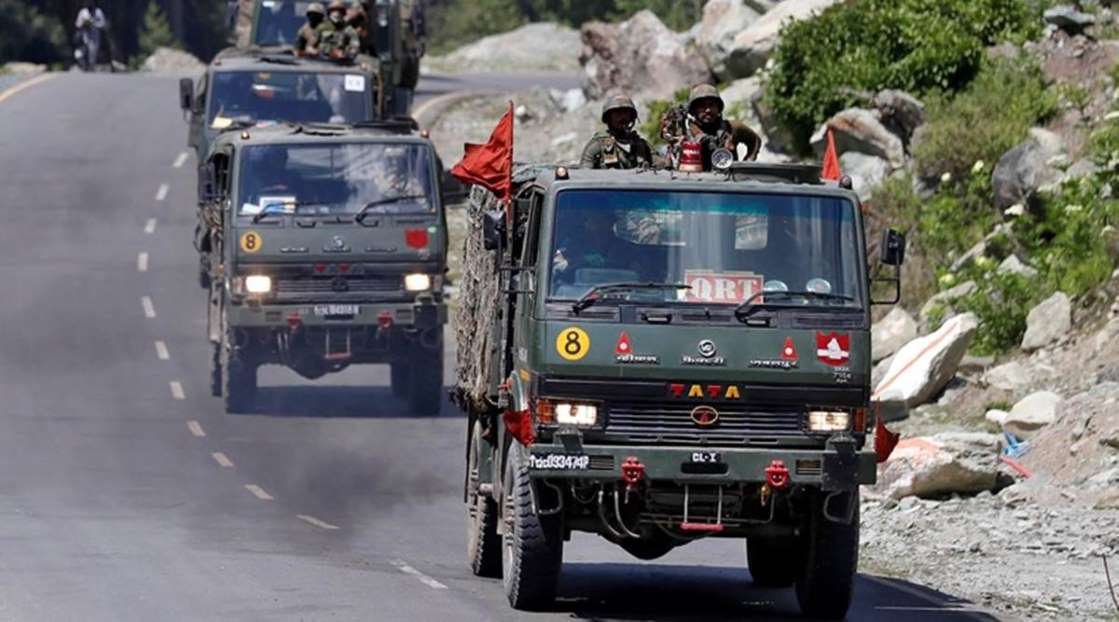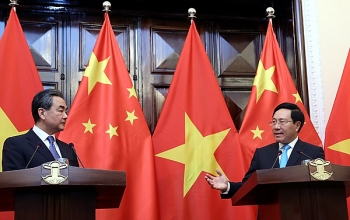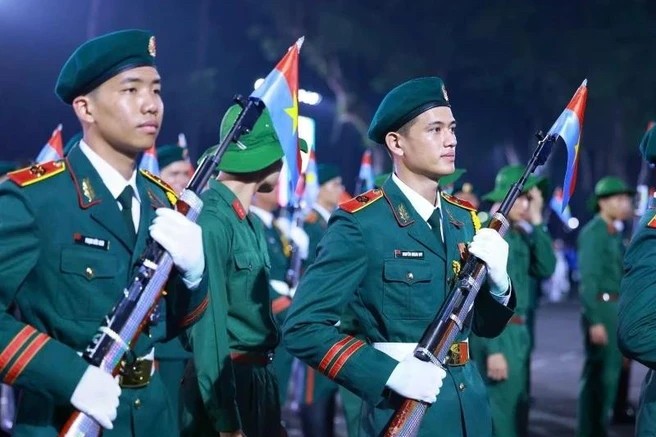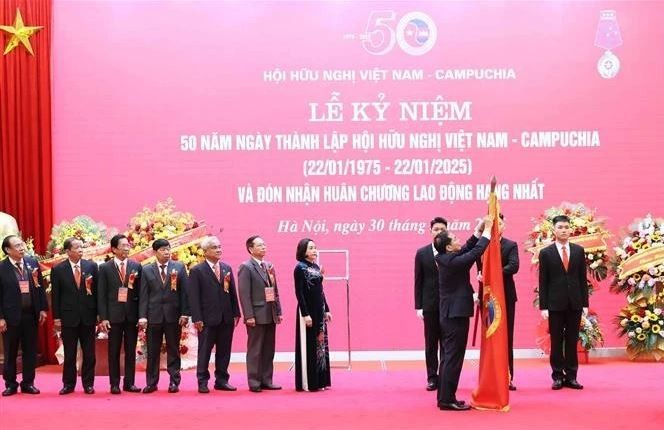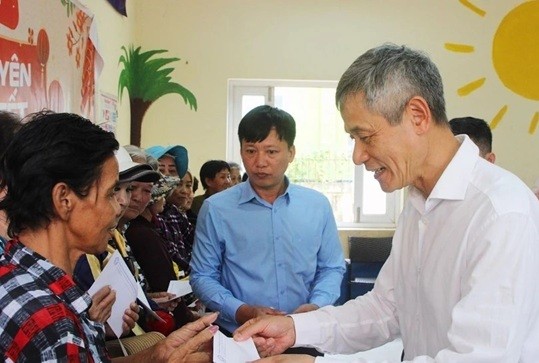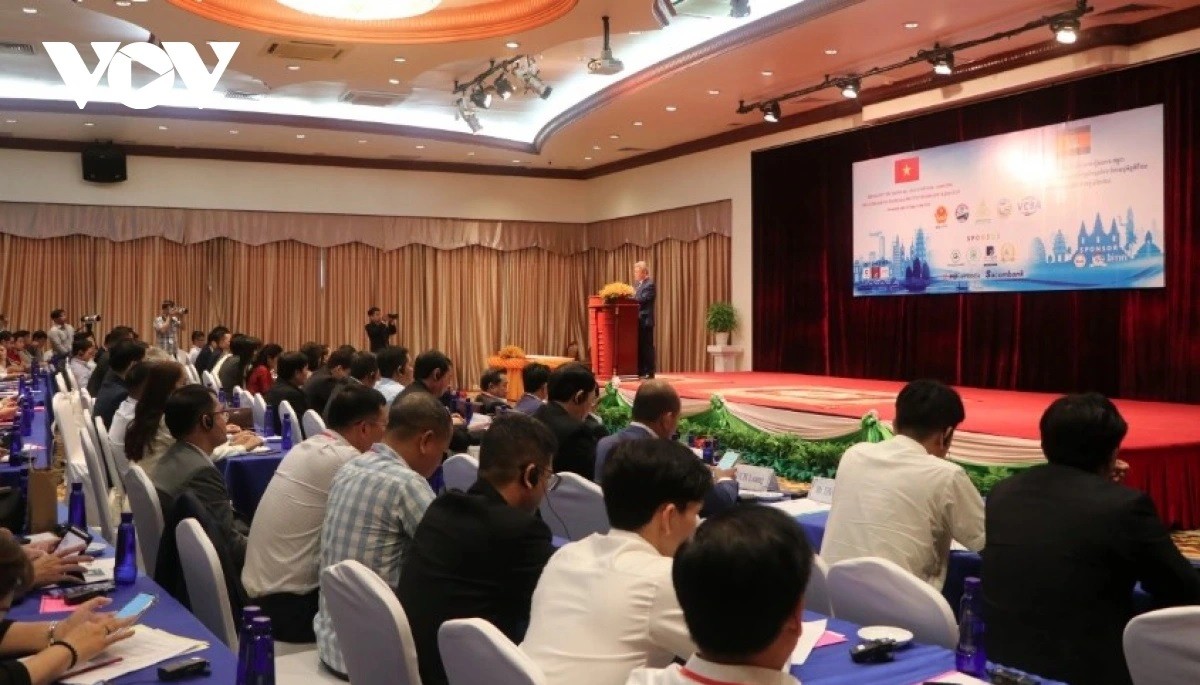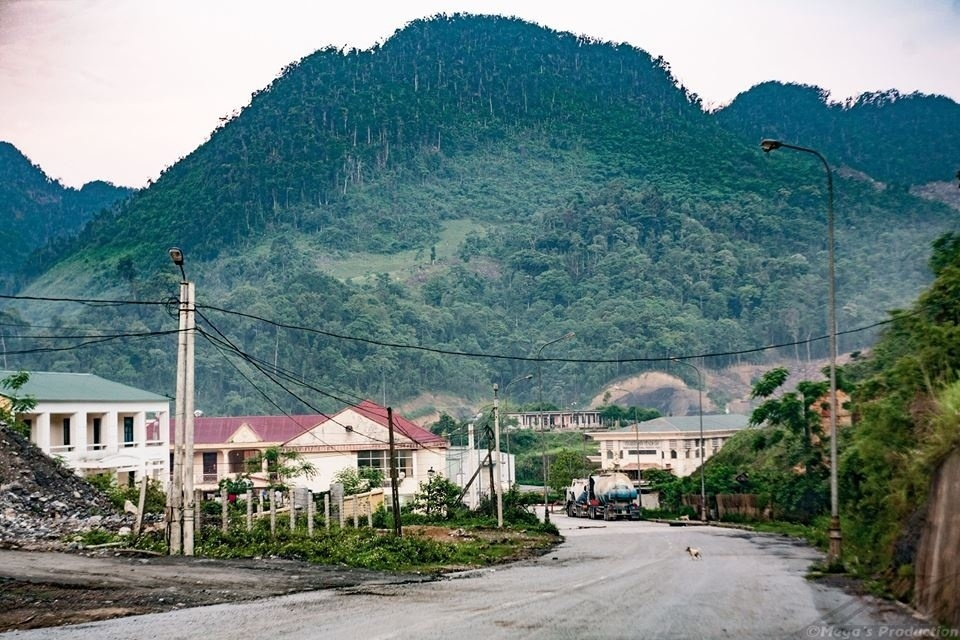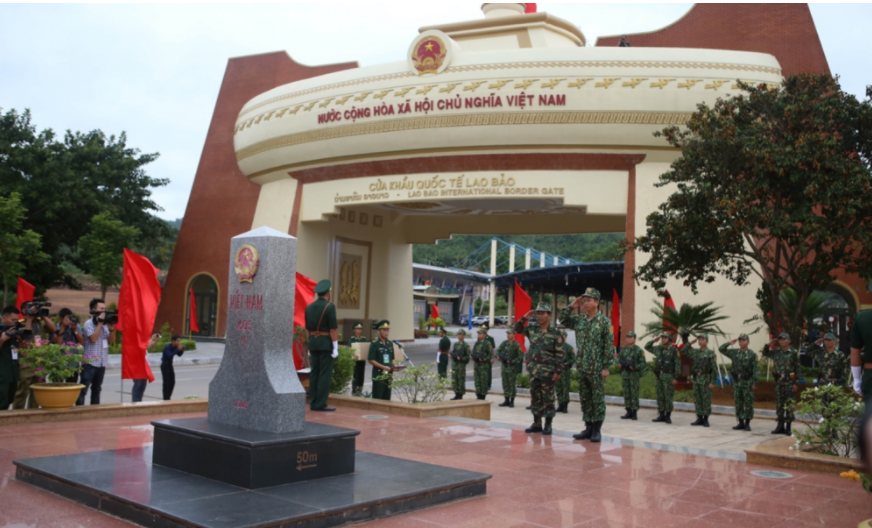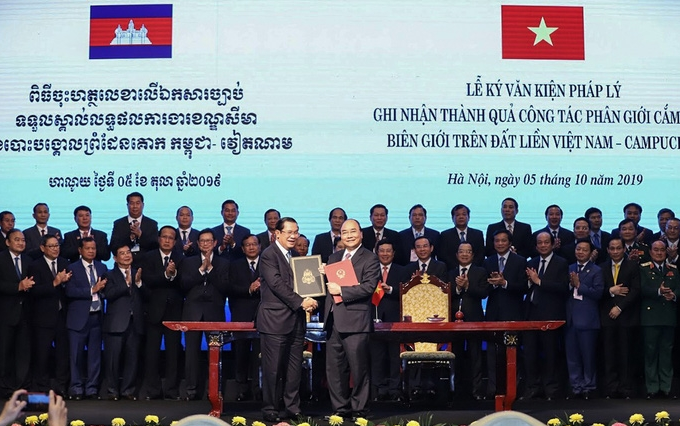Bu Prang: Differences In Perception About Border Delimitation Between Vietnam And Cambodia
The specific areas are:
1. Gia Lai province, border marks 30-40.
2. Dak Lak province, border marks 40-44.
3. Dak Nong province, border marks 56-60 (Bu Prang)
4. Tay Ninh province (Vam Trang Chau) border marks 139-147.
5. An Giang province, border marks 241- 245.
6. Binh Di area border marks 253.
7. Kien Giang province, border marks 296-302 (Rach Giang Thanh)
The border delimitation in the above-mentioned areas is facing many difficulties due to changes in delimitating methods, which is using the US’s UTM maps with the scale of 1/50000 instead of the scale 1/100000 of the Bonne maps from France. The two nations’ mapping methods are different. In Bu Prang area, the delimitation has been halted due to different perceptions of legal and management.
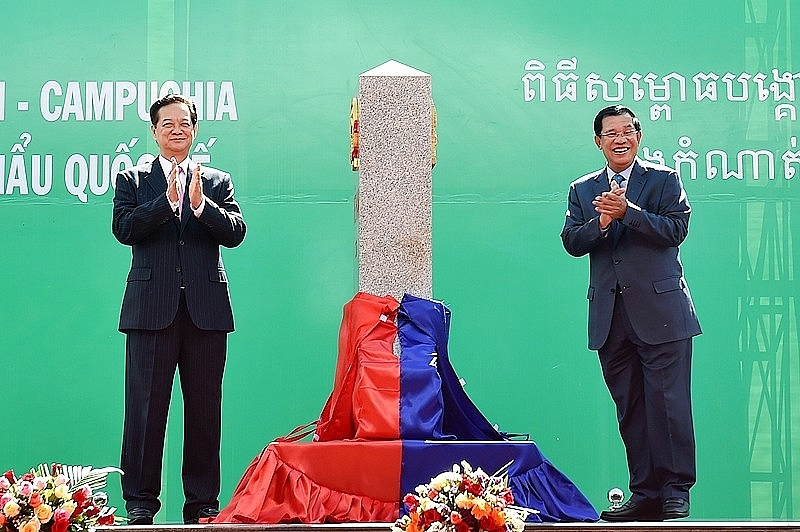 |
| Prime Minister Nguyen Tan Dung and Prime Minister of the Kingdom of Cambodia Hun Sen jointly opened a cloth covering landmark 30 of the border between the two countries. Photo: Nhat Bac |
To help raise awareness, we would like to provide the following information related to the Bu Prang border area:
Geographical features
Bu Prang is a large area of 52 km2. Two streams in the upstream of Dak Hu River, Dak Dang and Dac Huyt, flow through this area. (Dak Hu River has a length of about 75 km, Dak Huyt and Dak Dang have the length of about 15 km each). Bu Prang belongs to Quang Truc commune, Tuy Duc district, Dak Nong province. It bordered to San Monorom district, Mondunkiri province of Cambodia.
Management of Bu Prang area during medieval time
Before the French colonisation in Indochina, the Central Highlands and Bu Prang were under Vietnamese Nguyen Dynasty’s authorisation. The court’s management in this area was poor. No provincial authorities nor border defence forces were deployed. This was a wasteland, only few Kinh people travelled to this area for trading with ethnic people.
Ethnic people established 2 villages Bu Prang 1 and Bu Prang 2. Graves and vestiges of the previous inhabitants have been found recently. These two villages were under the administration of French colonists. People were forced to work in tea plantations and build roads. French colonialists applied heavy taxes on villagers. Therefore, the anti-French movements were strong, people here were resilient, such as No Trang Long uprising against French from 1912 to 1935.
The French invasion in Indochina and the formation of Dak Lak province
In 1890, Bishop Jasin Martial went to Dak Lak to evangelize. In 1893, Dr. Yersin came here to contact the local tribes. On November 2, 1899, General Governor of Indochina signed a decree to establish Commissariat Darlac of Laos. On November 22, 1904, General Governor of Indochina signed a Decree which put Commissariat Darlac under the administrative of Kon Tum province in Annam (Central region of Vietnam). On July 4, 1905, the General Governor of Indochina signed a decree to establish Dak Lak autonomous province in Annam. On March 30, 1932, the General Governor of Indochina signed a decree to establish Dak Dam in Dak Lak province:
To the Northeast, its bordered to Sre Pok and Krong No rivers.
In the Southeast is the hydrolysis between Dak Pri and Dak Drô, between Dak Tong and Dak Bung So, between Dak R’Mang and Dak Bung So rivers.
In the South bordered to Dong Nai river.
To the west, it is bordered to Dak Dam and the hydrolysis between Be and Dak Bung So rivers.
According to Bonne 192W map published in 1953, the boundary between Annam and Cochinchina coincided with the western boundary of Dak Dam (created in 1932). This shows that Bu Prang was not in Dak Lak province. The formation of Dak Lak province was not conducted on Cambodian soils during the colonial period.
In 1910, France established the French-Cambodian Committee to demarcate the boundary between Thu Dau Mot province (Nam Ky) and the province of Kampong Cham and Kratié (Cambodia). According to the report of the Committee in 1910, the two sides agreed to plan the boundary between Thu Dau Mot province (Cochinchina) and Kampong Cham and Kratié (Cao Mien). The agreement was marked by a map which illustrated that the borderline was along the branch of Dak Dang stream (The map is missing). Accordingly, the General Governor of Indochina issued Decree on 31 July 1914 to confirm the accuracy of the delimitation. Thus, during the French colonisation, Bu Prang was under the administration of Thu Dau Mot province (Cochinchine).
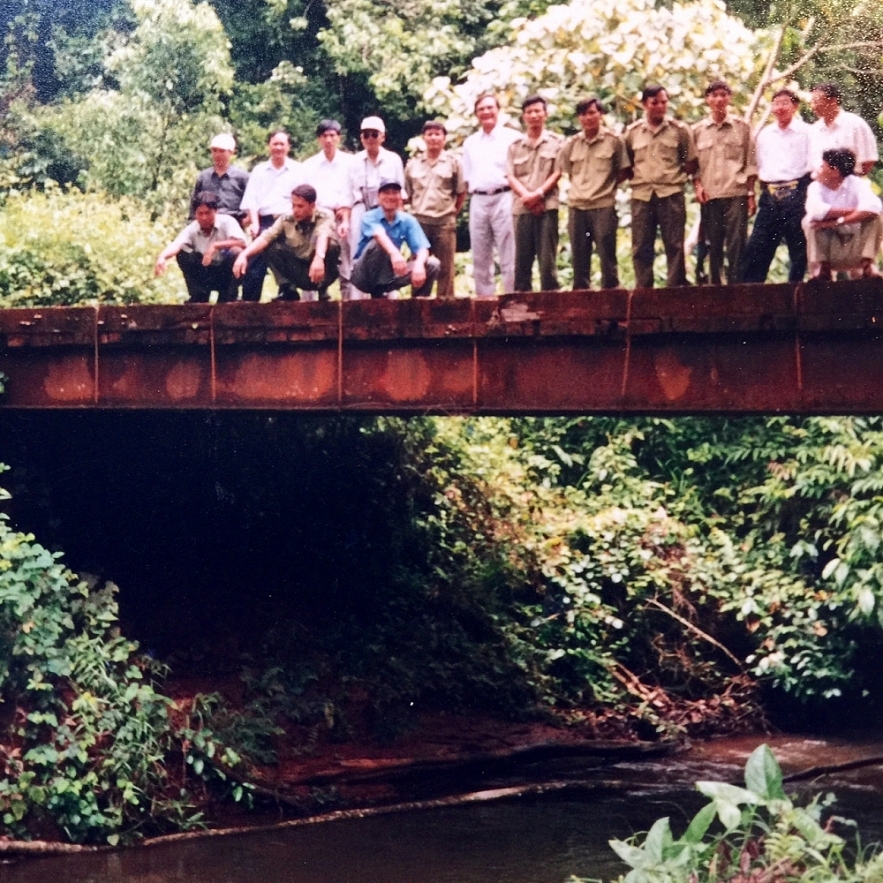 |
| The author (white shirt standing in the middle) with a delegation of surveyors in the Pu Prang area in April 1999. |
The Bu Prang area before the August Revolution in 1945, belonged to the Krong Yon commune, Bu Dop district, Thu Dau Mot province, led by Dien Toi. Bu Dop district at that time consisted of 3 communes: Bu Ya Map, Fa Mbêp (now belongs to Binh Phuoc province) and Krong Ykon (current Quang Truc commune, Tuy Duc district, Dak Nong province). Before 1945, the French established a border post in Krong Ykon, where 30 M’Nong ethnic groups were stationed under the command of a French garrison. This post was commonly known as “Le Rolland” post. The guards here used water from Dat Go stream, a branch that flows into the Dak Huyt River. This area was formerly the French airport Bu Krak, traces of which still remain until now.
The French colonialists implemented very strict rules in this area. The people here had to pay taxes to Thu Dau Mot province, were arrested and had to work as coolies. Besides, they were also private servants for the Le Rolland post at the request of the garrison.
South Vietnam’s management of Bu Pang during 1945 – 1975
At this time, the government of South Vietnam and Sihanouk both considered the Dak Dang stream to be the border between the two countries and took this stream as a place to meet and exchange, not to be deliberately crossed.
During this period, the US and the South Vietnamese government built a large fortification in this area to block the supply line of the Liberation Army of South Vietnam from Cambodia and control the entire area. Here they built the Bu Prang camp, which was often called the 5-star post.
Due to the important strategic role of this area, at the end of 1969, the Liberation Army of South Vietnam decided to launch a fierce attack on Bu Pong fortification. After destroying the US and the Southern government's bases around Bu Prang, on November 3, 1969, the Liberation Army used 3 infantry regiments and 1 advance artillery regiment to lay siege and attack Bu Pong base. The American and Southern forces stationed here included semi-armed forces and artillery commandos of the 5th Federation of American Special Forces. After 45 days of fighting, we inflicted heavy damage on the enemy, forcing them to use the B-52 to launch carpet bombing over our posts around Bu Pong, and at the same time bombarded the Cambodian territory. By January 1970, the US and the southern authorities had to rebuild the Bu Prang camp and reinforce the garrison. The A-236 team of the US Special Forces was assigned to guard the place.
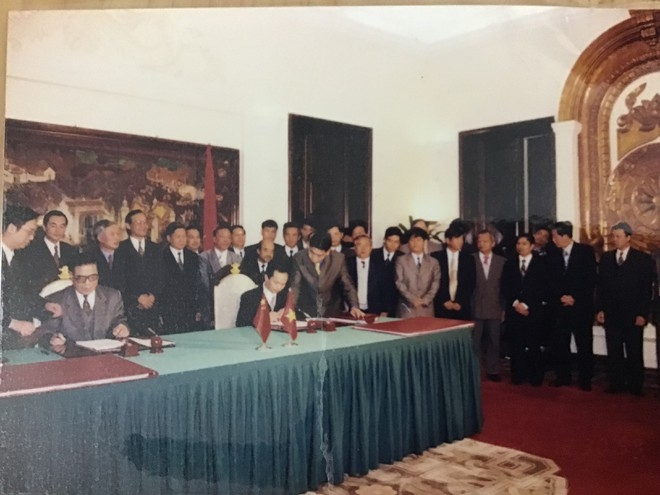 | A decade of Vietnam- China land border delimitation As soon as the normalization, in 1991, Vietnam and China enhanced negotiation on border demarcation. On December 30, 1999, the land border delimitation treaty between ... |
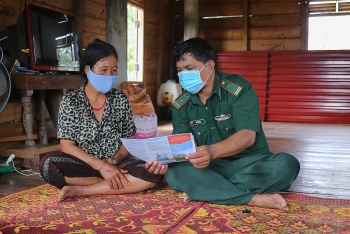 | Life At The COVID-19 Checkpoint By The Vietnam – Laos Border in photos The COVID-19 epidemic checkpoint, which is located close to the borderline, has been home to three border officers and soldiers who are on duty 24/7 ... |
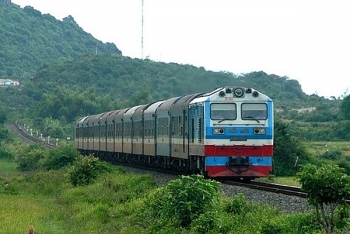 | Dong Dang - Ping Xiang Railway Establishment: Disputes Suspended For Trains To Depart After the restoration of the Vietnam-China diplomatic relations, the resumption of negotiations to settle border and territorial disputes and the opening of the Dong Dang ... |
In topics
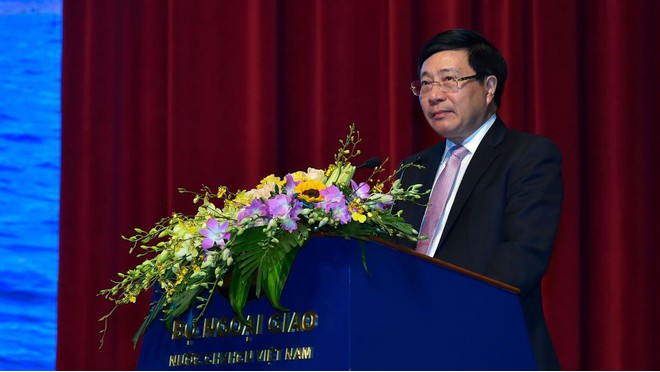 National
National
"Our coast is long, beautiful, we have to know how to keep it ..."
Recommended
 Seas and islands
Seas and islands
Vietnam Endorses Common Voice on Ocean Jurisdiction
 Seas and islands
Seas and islands
Dialogue as Key to Settling Disputes and Advancing Law of the Sea
 Seas and islands
Seas and islands
RoK Navy Ship Pays Friendly Visit to Da Nang City
 Seas and islands
Seas and islands
Naval Region 5 Promotes Reading Culture, Fosters Patriotism
Popular article
 Seas and islands
Seas and islands
Coast Guard Region 2 Command Hosts Philippine Coast Counterpart
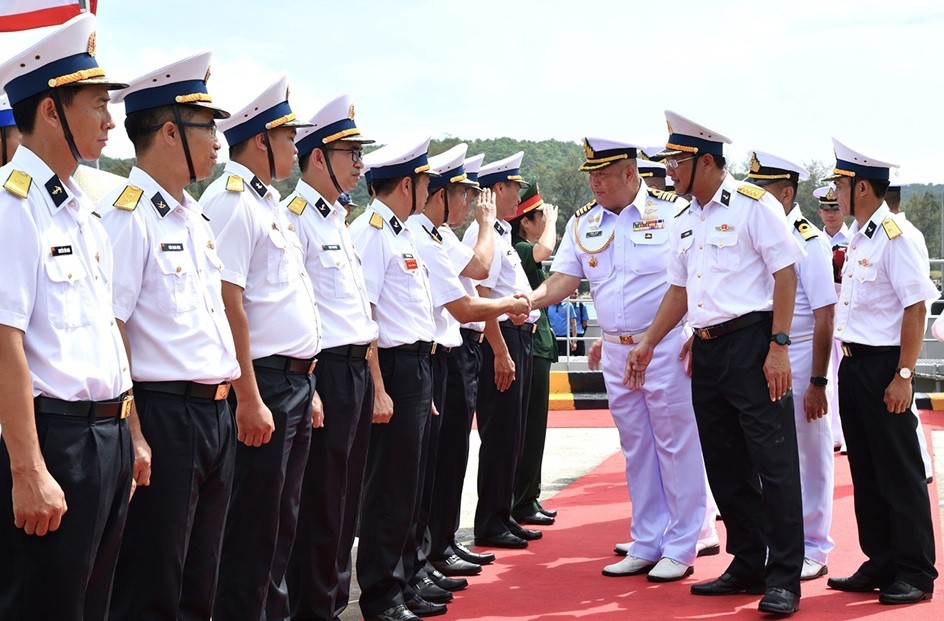 Seas and islands
Seas and islands
Vietnam - Thailand Navy: Coordination to Well Address Problems at Sea
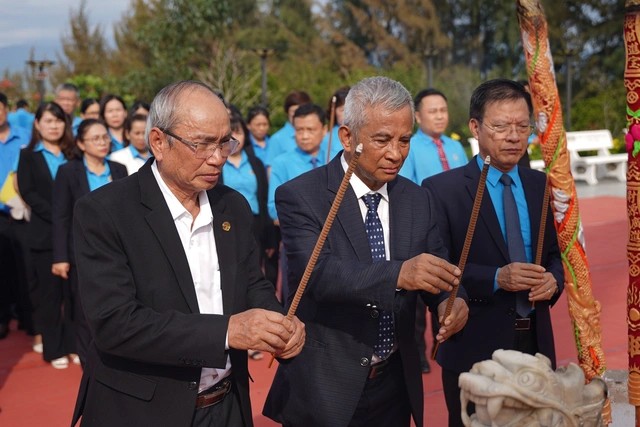 Seas and islands
Seas and islands
Honoring the Fallen: Incense Offering for the 37th Anniversary of Gac Ma
 Seas and islands
Seas and islands

